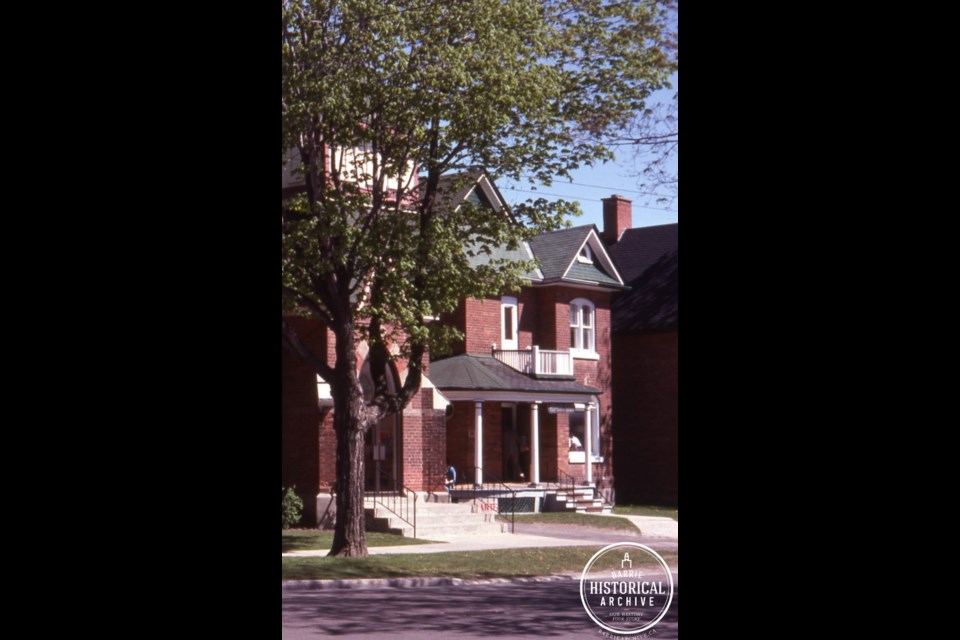This ongoing series from Barrie Historical Archive curator Deb Exel shows old photos from the collection and one from the present day, as well as the story behind them.
Sinclair House — 35 Clapperton St.
For more than 30 years, Alex Sinclair, superintendent of the Barrie tannery, lived in this red brick house at 35 Clapperton St., with his wife Katherine and family. The couple had two daughters: Annie and Margaret, both became teachers.
Alex was born in 1861 on a farm in Fenelon Township, Victoria County, to pioneer parents from Islay, Scotland. As a teen, Sinclair worked at lumber mills in Fenelon Falls and in the state of Michigan.
In what would become a life-changing decision, Alex joined his brother John, who was working in the tanning business in Hastings, Ont. The brothers struck out on their own, operating a shoe leather tannery in Port Hope.
On Jan. 2, 1894, the Sinclair brothers took charge of the Barrie Tanning Company, previously owned by William H. Cross. Cross lived in an opulent Victorian mansion at the corner of Collier and Poyntz streets. The brothers ran the tannery with keen industry, employing about 16 men.
When a fire destroyed their Dunlop Street plant in 1900, thanks to some inducements from the Town of Barrie, the Sinclairs were able to acquire land on Bradford Street where they built an impressive new tannery, employing 115 men.
The company was thriving. Exports within Canada, and throughout the United States and Europe, boosted their business.
During the Second World War, the tannery shipped substantial amounts of leather to Russia.
The Sinclair brothers worked well together. John, as managing director, did the travelling while Alex remained on site as superintendent of the tannery.
John’s son Peter, Alex’s nephew, would later become general manager of the tannery, and also one of Barrie’s more popular and successful mayors. John lived at 42 Toronto St. Peter and his family would also live in the Toronto Street home before moving to the Foxley estate.
Alex retired from the tannery business about 1921. He stayed active by curling in the winter and lawn bowling in the summer. Although he identified as Presbyterian, Alex and his family were very close — in more ways than one! — to the First Baptist Church next door.
The Sinclairs attended the neighbouring church and were involved parishioners. When Alex passed away, the Rev. John McGillicuddy of the First Baptist Church officiated Alex’s funeral in the Clapperton Street home.
Sinclair House would become part of the First Baptist Church complex, used for a variety of church needs, both administrative and congregational.
The verandah has changed and the small balcony at the front of the house has been removed, but the former Sinclair home at 35 Clapperton is still recognizable today.








